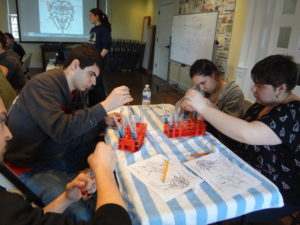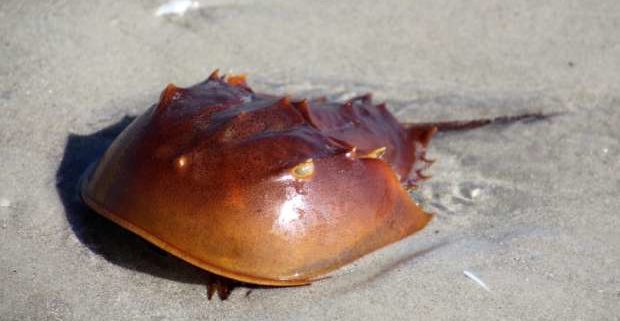This Flu Season, Thank a Horseshoe Crab
The next time you see a horseshoe crab,consider going out of your way to shake its hand – or one of its fourteen legs – because if you’ve had a flu shot this season or any vaccination or intravenous procedure over the past 40 years, a horseshoe crab may have saved your life.
This odd looking, helmet-shaped creature that we commonly see on the shores of Long Island Sound is the product of over 450 million years of evolution. Over that period, it developed a trait that is critical to modern medicine. LAL, a compound in the blue (yes, blue) blood of the western Atlantic horseshoe crab, clots vigorously in the presence of certain proteins, called endotoxins, which can be lethal to humans. To ensure that human vaccines and the equipment used to administer them are endotoxin-free, they are first tested with LAL. In the presence of endotoxins in a concentration of even one part per trillion, the clotting will occur almost instantaneously. If no clotting occurs, the vaccine is safe.
 At SoundWaters, students have been studying horseshoe crabs since 2005 and simulating the testing process to determine if different liquids are endotoxin-free. Students also come to appreciate that even a creature that has survived so long can be easily threatened by human impact on its coastal habitat.
At SoundWaters, students have been studying horseshoe crabs since 2005 and simulating the testing process to determine if different liquids are endotoxin-free. Students also come to appreciate that even a creature that has survived so long can be easily threatened by human impact on its coastal habitat.The horseshoe crab may live at the bottom of the Sound, camouflaged to look like a rock, but it performs like a rock star




